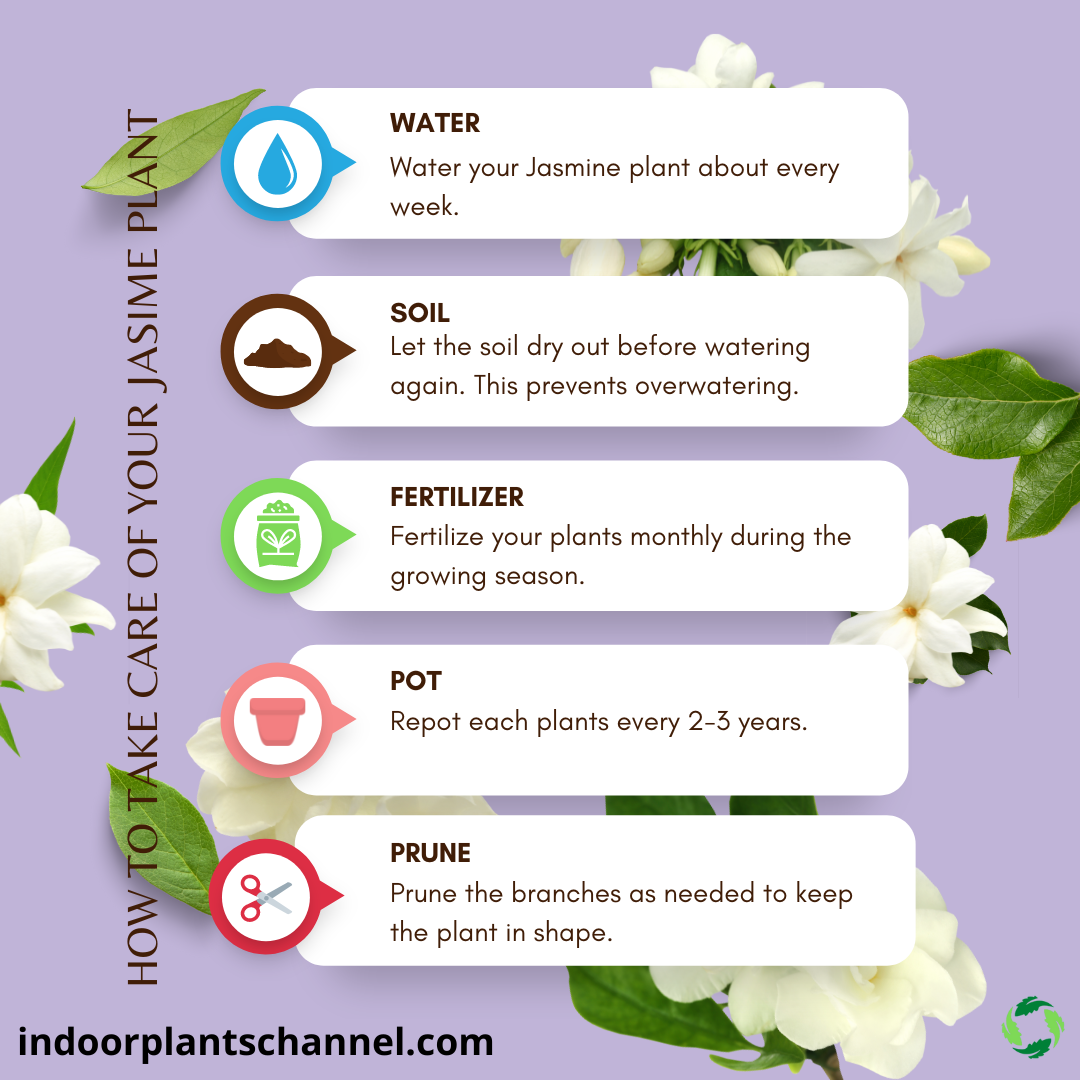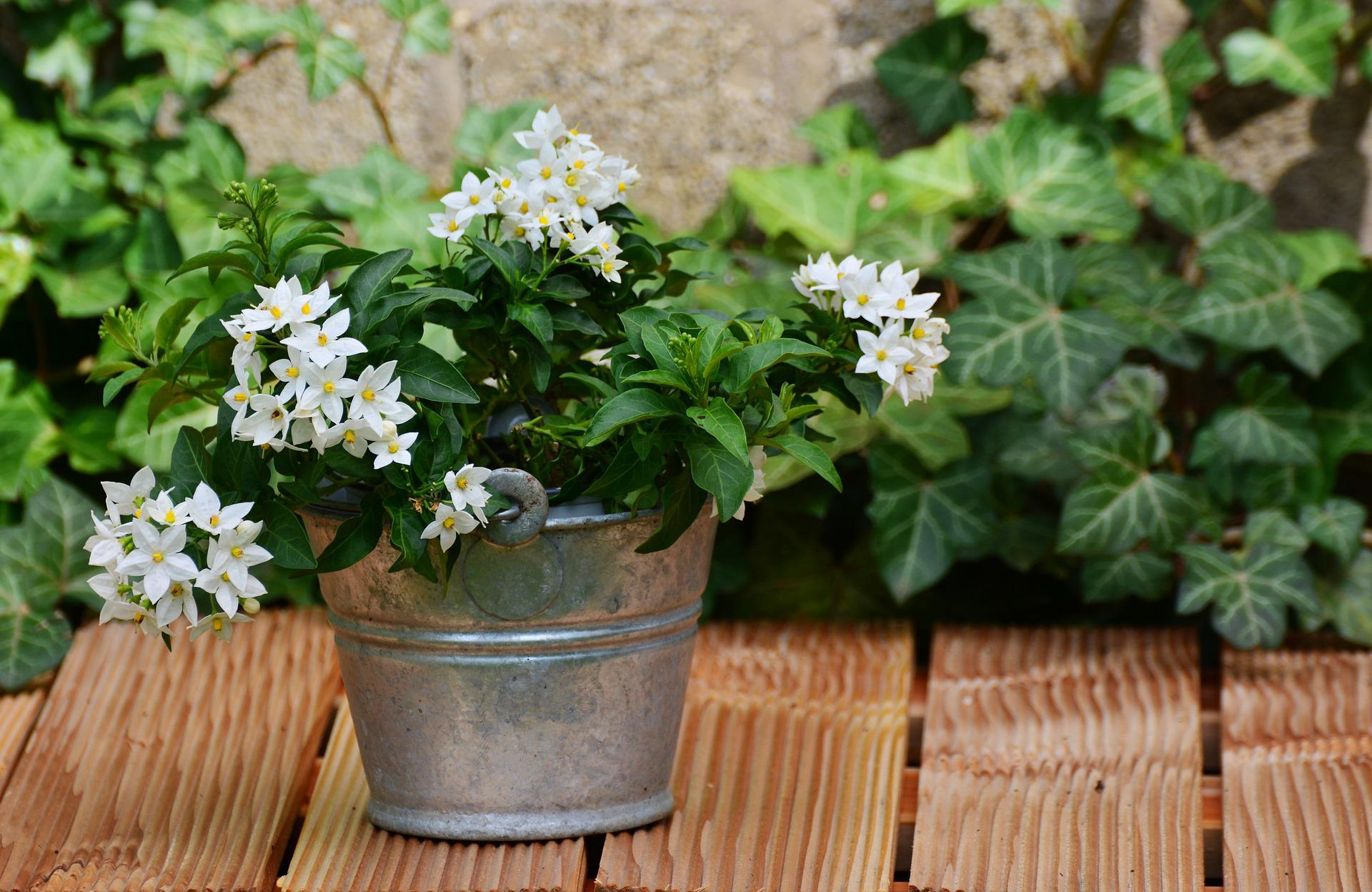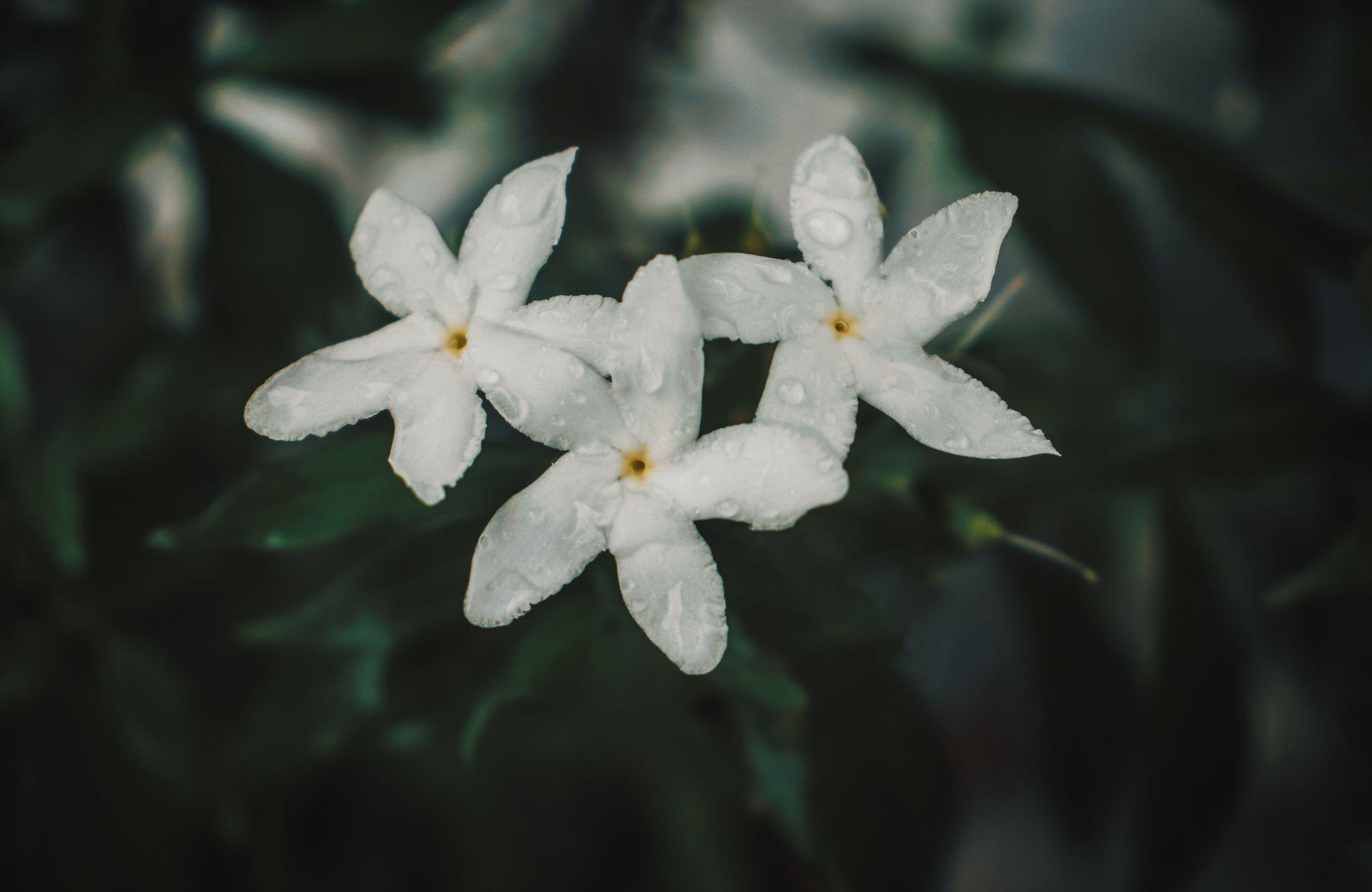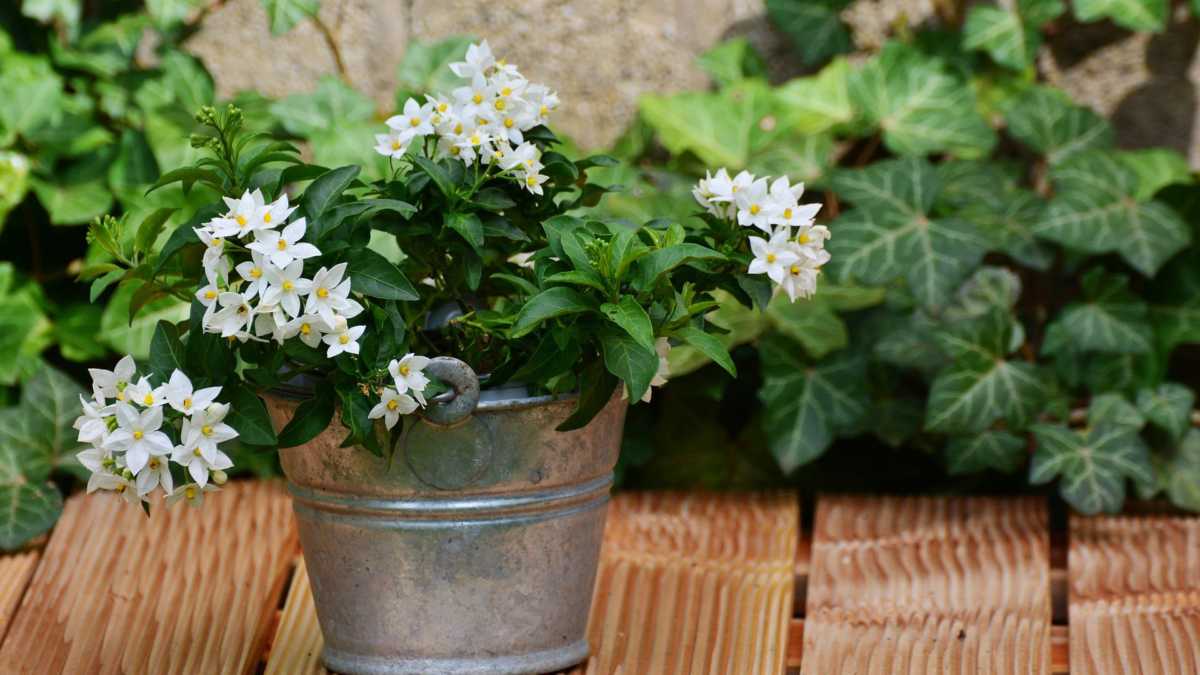The best way to find out what we really need is to get rid of what we don’t – Marie Kondo
Jasmine plants are beautiful and fragrant, and they make a great addition to any home. But if you want your Jasmine plants to thrive, you need to know how to care for them properly. In this blog post, we’ll share some tips on how to water jasmine plants in pots so that they stay healthy and happy.

Why Water Is Important For Jasmine Plants
Water is essential for the survival of all plants, including jasmine plants. Jasmine plants need water for several reasons: to help them grow, to keep them healthy, and to produce flowers.
Without enough water, jasmine plants will not be able to grow properly. Their leaves will begin to droop and they will eventually die. Even if a jasmine plant does not die from lack of water, it will not be as healthy as it could be. It is important to water jasmine plants regularly so that they can stay healthy and grow to their full potential.
Another reason to water jasmine plants is that they need water to produce flowers. Flowers are important to jasmine plants because they attract pollinators like bees, which help the plant reproduce. If a jasmine plant does not have enough water, it will not produce as many flowers. This means that the plant will be less likely to reproduce, and its population will decrease.
So, as you can see, water is essential for jasmine plants. Make sure to water your jasmine plants regularly, and give them enough water so that they can stay healthy and grow to their full potential.
How Often To Water Jasmine Plants
It is important to water jasmine plants regularly, especially during the warmer months when they are actively growing. However, you should not over-water them as this can lead to root rot. A good rule of thumb is to water them once a week, or when the soil is dry to the touch. If you live in a hot, dry climate, you may need to water them more frequently.
If the leaves start to turn yellow, that means the plant is getting too much water. Allow the soil to dry out slightly before watering again.
Jasmine plants need a lot of sunlight, so make sure they are in a sunny spot. If they are not getting enough light, the leaves will start to turn pale.
Fertilize jasmine plants once a month during the growing season with a balanced fertilizer. Stop fertilizing in the fall so the plant can go dormant for the winter.
Pruning is also important for jasmine plants. Trim back any dead or dying branches, and shape the plant to keep it looking nice. Pruning also encourages new growth.
Jasmine plants are relatively easy to care for, as long as you remember to water them regularly and give them plenty of sunlight. With a little bit of care, they will thrive and produce beautiful flowers.

What To Do If You Forget To Water Your Jasmine Plant
If you forget to water your jasmine plant, here’s what you should do:
1. Check the soil to see if it’s dry. If it’s dry, water it immediately.
2. If the soil is still moist, wait a day or two before watering.
3. If the plant is wilting, it needs water right away.
4. When you do water, water deeply so that the roots get a good soaking.
5. Water in the morning so that the leaves have time to dry off before nightfall.
6. Don’t let the plant sit in water. If the pot doesn’t have drainage holes, add some rocks to the bottom before adding soil.
7. If the plant is wilted and the soil is dry, it may need a gallon (3.8 L) of water or more.
8. If the plant is wilted and the soil is still moist, it probably just needs a good soaking.
9. Once the plant is perked up, water it on a regular schedule. Watering once a week is usually sufficient, but more often may be necessary in hot, dry weather.
10. If you’re not sure how often to water, check the soil before watering. If it’s dry, water it. If it’s still moist, wait a day or two.
Picking The Right Pot For Your Jasmine Plant
There are a few things to consider when choosing a pot for your jasmine plant. The first is the material the pot is made from. Terracotta and ceramic are good choices because they allow the roots to breathe and help prevent overwatering.
The second is the size of the pot. Jasmine plants can grow quite large, so it’s important to choose a pot that will give the roots plenty of room to grow. A pot that is too small will stunt the plant’s growth.
The third is the drainage. Jasmine plants need well-draining soil to prevent root rot. Be sure to choose a pot with drainage holes in the bottom.
Now that you know what to look for in a pot, here are a few of our favorites.
Terracotta pots are a classic choice for jasmine plants. They’re made from natural clay that is fired in a kiln. Terracotta is a porous material, so it allows the roots to breathe and helps prevent overwatering.
Ceramic pots are another good option for jasmine plants. They’re made from non-porous clay that is glazed. Ceramic pots are not as breathable as terracotta pots, but they’re more durable and easier to care for.
If you’re looking for a pot that is both stylish and functional, try a fiberglass pot. Fiberglass is a durable material that is perfect for indoor or outdoor use. Fiberglass pots come in a variety of styles and can be customized to fit your space.
No matter what type of pot you choose, be sure to add drainage holes to the bottom. This will help to prevent root rot and keep your jasmine plant healthy and happy.

Quick Tips
- Water your jasmine plants regularly, making sure to keep the soil moist but not soggy.
- Place your jasmine plants in a bright spot, but out of direct sunlight.
- Fertilize your plants every few weeks during the growing season.
- Once the weather begins to cool down in the fall, reduce watering to once a week.
- Bring your plants indoors during the winter months to protect them from the cold.
- Keep an eye out for pests and diseases, and treat accordingly if you see any problems.
- Prune your plants regularly to encourage new growth.
- With proper care, your jasmine plants should bloom in the spring. Enjoy their beautiful flowers!
According to a study conducted by the University of Florida, jasmine plants in pots produced significantly more flowers and had a higher rate of flower production than those planted in the ground.
Conclusion
If you want your jasmine plants to thrive in pots, water them regularly. Keep an eye on the soil and water when it starts to dry out. In the warmer months, you may need to water more frequently. Be careful not to overwater, as this can lead to root rot. Jasmine plants are relatively low-maintenance, but regular watering is essential to keeping them healthy.
Michelle Wilde
Related posts
3 Comments
Leave a Reply Cancel reply
![]()
About Michelle Wilde
Michelle Wilde is a stay-at-home mom and avid plant lover. Armed with a post-graduate degree in Computer Science (no kidding!), she loves researching plants and landscapes. When she is not caring for her 4 kids, she spends time on her passion for plants. She blogs at www.indoorplantschannel.com, the trusted source for indoor plants.
Learn more
Subscribe
* You will receive the latest posts and updates about indoor plants!
Search
Recent Posts
Categories
- Beginner Guides (10)
- FAQ (206)
- General (2)
- How-To Guides (212)
- Indoor Plants (214)
- Pest Management (2)
- Plant Problem Solutions (4)
- Seasonal Growing (2)
- Specialized Environments (2)
- Specific Plant Care (3)
- Technical Growing (2)

[…] it comes to jasmine plants, pot size does matter. The right pot size will ensure that your plant has enough room to grow and stay […]
[…] this blog post, we’ll give you some tips on choosing the right jasmine plant for your home, based on the size of the pot you have and the amount of sunlight it will […]
[…] this blog post, we’ll give you some tips on choosing the right jasmine plant for your home, based on the size of the pot you have and the amount of sunlight it will […]